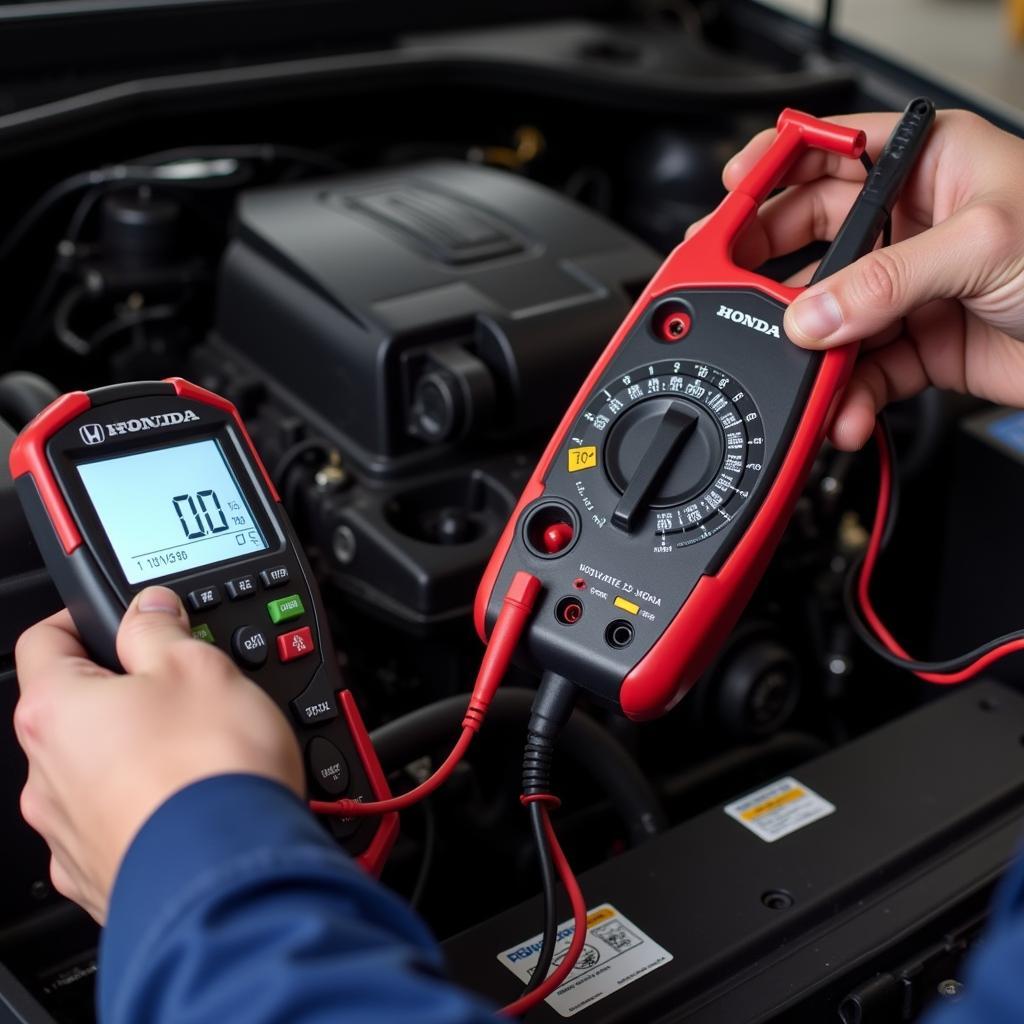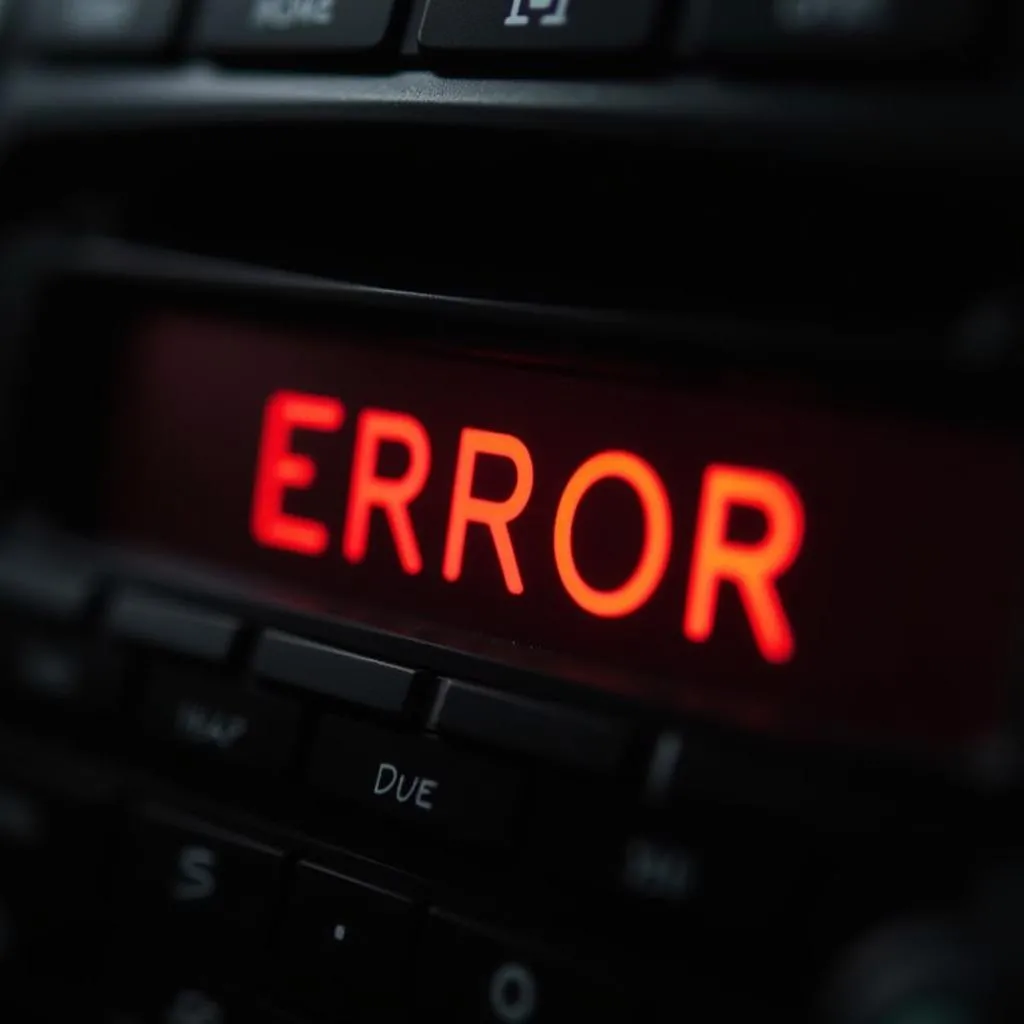A 2013 Honda Accord illuminating your dashboard with a cascade of warning lights can be a nerve-wracking experience. Particularly concerning is when the ABS, brake, traction control, and steering system warning lights decide to throw a simultaneous party on your instrument panel. This isn’t just a cause for concern; it’s a clear signal that your car is trying to tell you something important. Let’s delve into the potential culprits behind this warning light symphony and explore how to restore your peace of mind (and a fully functional vehicle).
Common Causes of Multiple Warning Lights
While each of these warning lights signifies a distinct system, their simultaneous activation often points to a common root cause. Here are some of the usual suspects:
1. Faulty Wheel Speed Sensor
The most common culprit behind this multi-light extravaganza is often a malfunctioning wheel speed sensor. These sensors, typically one for each wheel, play a crucial role in the Anti-lock Braking System (ABS), Traction Control System (TCS), and Electronic Stability Control (ESC). They constantly monitor wheel speed, providing critical data to these systems.
What happens when a wheel speed sensor goes rogue? When a sensor fails or sends inaccurate data, it throws these interconnected systems into disarray. The result? The warning light party on your dashboard.
 Faulty Wheel Speed Sensor
Faulty Wheel Speed Sensor
2. Malfunctioning Steering Angle Sensor
Another potential party pooper is the steering angle sensor. This sensor communicates the position of your steering wheel to the Electric Power Steering (EPS) system and other safety systems.
Why does it trigger a light show? A faulty steering angle sensor can disrupt the EPS, leading to unexpected steering behavior. The safety systems, sensing an anomaly, activate the warning lights as a precautionary measure.
3. Low Battery Voltage
Believe it or not, a seemingly unrelated issue like a weak or dying battery can also be the mastermind behind this illuminated dashboard drama.
The connection? Your car’s intricate electronic systems, including the ABS, TCS, and EPS, require a stable voltage supply to function correctly. A low battery voltage can disrupt these systems, triggering a chain reaction of warning lights.
 Car Battery Voltage Test
Car Battery Voltage Test
4. Faulty ABS Module
While less common, a malfunctioning ABS module can be the root of your warning light woes. This module acts as the brain for your ABS, and its failure can send the entire system into a tailspin, triggering the accompanying warning lights.
Troubleshooting the Issue
Before you hit the panic button and envision hefty repair bills, let’s explore some preliminary troubleshooting steps:
- Check Your Battery: Start with the basics. Inspect your battery terminals for any signs of corrosion or loose connections. Clean the terminals if necessary and ensure a tight connection.
- Inspect the Wheel Speed Sensors: Examine the wheel speed sensors for visible damage or debris. Look for any loose or damaged wiring. Cleaning the sensors might resolve the issue if dirt or grime is the culprit.
- Scan for Diagnostic Trouble Codes: If the problem persists, it’s time to consult a professional. A mechanic can use a diagnostic scanner to retrieve specific trouble codes stored in your car’s computer, pinpointing the root cause of the warning light activation.
Don’t Ignore the Warning Signs
Ignoring these warning lights is akin to hitting the snooze button on a critical alarm clock. It might silence the immediate annoyance, but it won’t address the underlying issue. Remember, these systems are crucial for your safety and the safety of others on the road.
Expert Insights
“I’ve seen countless cases where drivers ignore these warning lights, thinking it’s a minor glitch,” says automotive electronics expert, Mark Stevenson. “What they don’t realize is that these seemingly unrelated systems are interconnected. Ignoring these warnings can lead to more severe problems and costly repairs down the line.”
Conclusion
Experiencing an illumination show on your 2013 Honda Accord’s dashboard is undoubtedly concerning. However, understanding the potential causes and taking prompt action can save you from further headaches and ensure your safety on the road. Remember, a well-maintained car is a safe car.

